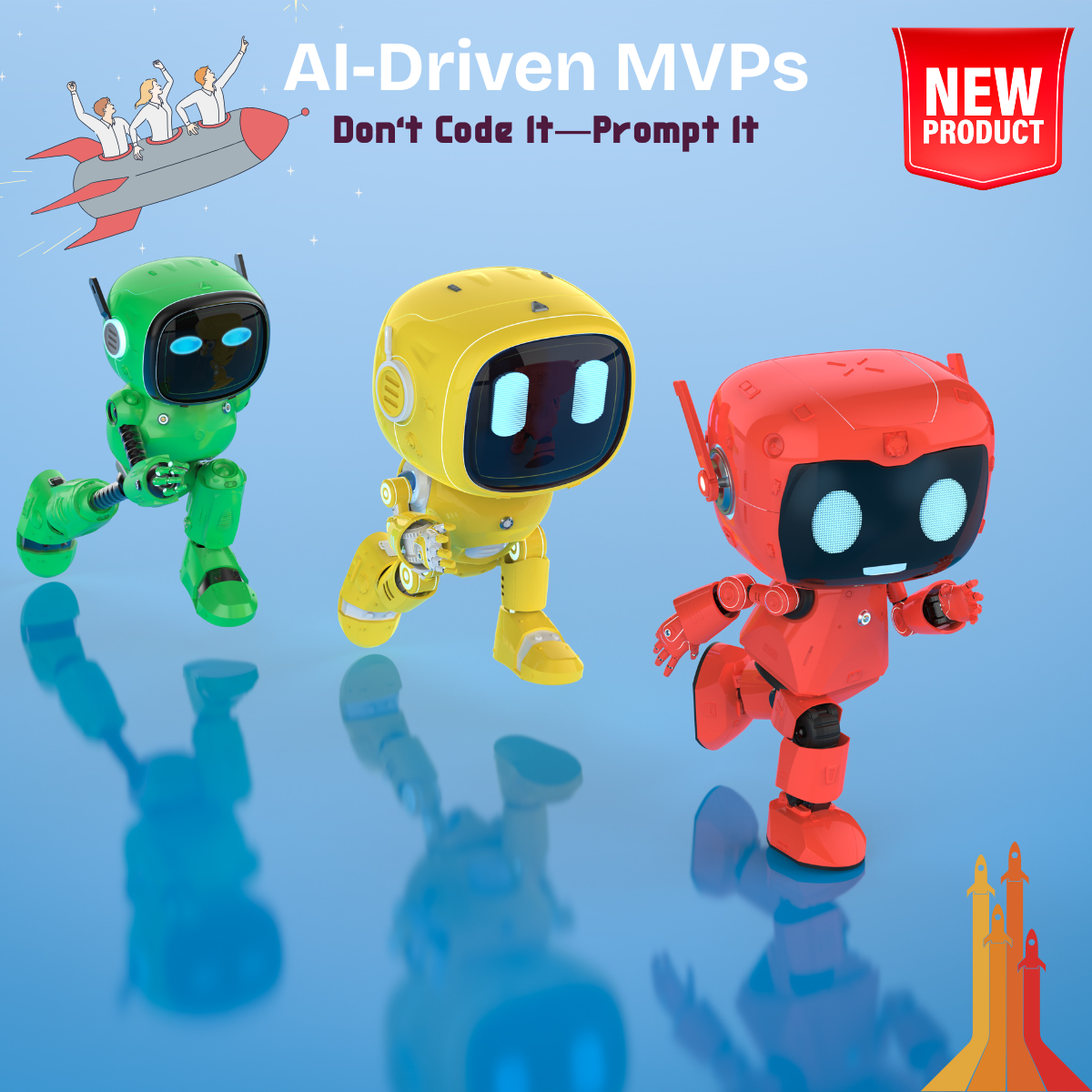Posted At: Aug 14, 2025 - 310 Views

MVP in 2025: How AI Is Redefining Product Prototyping
In today’s fast-paced digital economy, speed to market can make or break a product. The traditional concept of a Minimum Viable Product (MVP) has long served startups and enterprises as a way to test, validate, and iterate quickly. But in 2025, AI is not just accelerating MVP development—it’s transforming every phase of it. From ideation and user research to coding and deployment, AI tools are reshaping how products come to life.
🚀 Why MVP Still Matters in 2025
The MVP remains the bedrock of lean product development. Its purpose: launch a usable product with just enough features to validate a concept, gain feedback, and guide future development. However, what has evolved is howMVPs are built and whocan build them. Thanks to AI, the barrier to entry is lower than ever, enabling non-technical founders, small teams, and corporate innovators to prototype rapidly.
🤖 AI Across the MVP Lifecycle
AI now plays a central role in each stage of MVP development. Here's how:
1. Ideation & Market Validation
- Generative AI toolslike ChatGPT, Claude, and Perplexity AI analyze trends and generate product ideas.
- LLMs simulate customer personas, creating hypothetical user feedback to validate assumptions.
- Tools like Synthetic User Researchhelp test product-market fit before a single line of code is written.
2. Rapid Design Prototyping
- Tools such as Uizard, Galileo AI, and Figma AIconvert natural language prompts into wireframes.
- Designers collaborate with AI to quickly produce low- and high-fidelity mockups.
- AI can even recommend UX patterns based on behavioral data and industry best practices.
3. Automated Development
- AI code assistants(e.g., GitHub Copilot, Replit AI) generate backend and frontend code with simple prompts.
- No-code/low-code platforms enhanced by AIallow drag-and-drop building for web and mobile apps.
- Platforms like Builder.aiand Appgyverfurther democratize access to MVP creation.
4. Testing and User Simulation
- AI-driven tools simulate thousands of user sessions to test usability and performance.
- Feedback analysis is done in real-time, with LLMs summarizing reviews and highlighting key trends.
- Agents like AutoGPTor LangChain-powered testersrun automated quality assurance processes.
5. Continuous Feedback & Iteration
- AI analyzes product usage metrics to suggest new features or improvements.
- Predictive analytics help teams prioritize backlog items with the highest expected ROI.
- AI agents can run experiments (A/B tests), interpret results, and even trigger code updates.
🌎 A New AI-Powered MVP Framework
In 2025, a typical MVP development process might look like this:
- Prompt AI for Ideas: Use AI to generate product concepts, user personas, and competitive analysis.
- Auto-Design the Interface: Turn those prompts into UI/UX wireframes.
- Autogenerate the Backend: Use AI coding tools or no-code platforms for logic and database setup.
- Run Simulated Testing: Validate flows with synthetic users or agent-based simulations.
- Collect Real-Time Feedback: Use AI to monitor early user interactions and iterate quickly.
🚀 What's Next: Autonomous Product Teams?
We’re beginning to see the rise of AI agents acting as product teams. These autonomous agents can:
- Interview users (via chat or voice)
- Summarize pain points
- Propose features
- Write code
- Test functionality
- Deploy updates
While human oversight is still critical, AI agents are increasingly becoming co-founders, co-designers, and co-developers.
✨ Final Thoughts
In 2025, building an MVP no longer means months of effort and a team of engineers. With AI, you can ideate in the morning, prototype by lunch, and test with users by evening. The intersection of AI and MVP development is democratizing innovation and leveling the playing field for entrepreneurs everywhere.
AI doesn’t just speed up the MVP process—it fundamentally transforms it. And for startups and enterprises alike, that's a game-changer.
